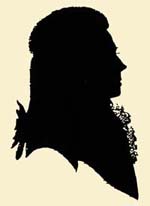History of the Zoological Collection

The Zoological Collection of the University of Rostock was founded by the orientalist Professor Dr Oluf Gerhard TYCHSEN (active 1789-1815) in 1775, integrating older items, initially in Bützow, after he took up his post as curator of the university library there, which he had also founded. After the reunification of the ducal academy with the University of Rostock in 1789, the interdisciplinary ‘Academic Museum’ was initially housed in the White College. In 1844, after taking over the remains of the Grand Ducal collection from Ludwigslust and Schwerin, the holdings were moved to the ‘Neues Museum’ (now part of the main university building) and finally, in stages from 1880, to the building of the former Imperial Chamber Court from 1840 at Universitätsplatz 2. A large part of the collection is still housed there today in the historic glass cabinets as a ‘museum within a museum’, documenting the storage and exhibition of natural artefacts towards the end of the 19th century. Losses after the Second World War, not least due to the repeated removal of particularly valuable specimens to Berlin, were compensated for and even surpassed by collections made by marine and fisheries biologists in the GDR and, since 1995, by the wide-ranging collection of zoology staff and students as well as the acquisition of smaller partial collections.

In the 18th and 19th centuries, the collection was the cause, backbone and guarantor for the foundation and existence of the subject of zoology at the University of Rostock and was expanded and utilised by many professors of national importance at the time. The following should be emphasised: H. F. LINK (active in Rostock 1792-1811), a universal talent, first describer of numerous species from the zoological collection, founder of lichenology, renowned chemist and co-founder of natural history and patriotic societies. H. F. STANNIUS (active 1837-1862), insect expert, physician, anatomist and zoologist was a beacon of the then flourishing comparative anatomy. Anatomical structures are still named after him today. K. BERGMANN (active 1863-1865), who died at an early age, is memorable for his ‘Bergmann's rule’ in ecology. J. A. C. ROEPER (active 1836-1879) was predominantly a botanist, but he also read zoology and earned merit by taking over the remains of the Grand Ducal collection. An independent Zoological Institute was first established in 1871 by F. E. SCHULZE (active 1865-1873), who after his achievements in Rostock was able to follow calls to Graz and Berlin. A. GOETTE (active 1882-1886) was an osteologist and a pioneer of developmental biology. M. BRAUN (active 1886-1891), versatile parasitologist and applied zoologist, later founded the local zoo in Königsberg. F. BLOCHMANN (active 1891-1898), a founder of protozoology, was able to initiate a tradition in Tübingen that continues to this day. H. SPEMANN (active 1908-1914) became a pioneering developmental biologist and was later (1935) awarded the Nobel Prize for his work. Likewise (1973) K. V. FRISCH (active 1921-1923), who wrote his manuscript for ‘The Language of Bees’ in Rostock. K. FRIEDERICHS (active 1919-1942), associate professor, founded the first entomological institute (‘seminar’) in Germany as a tropical biologist in Rostock in 1927. The series of 23 full professors and 3 associate professors could be continued. Many left Rostock after just a few years because they had made a name for themselves here, followed a call to other universities, which the always poor state of Mecklenburg had nothing to offer and thus lost these capacities.
